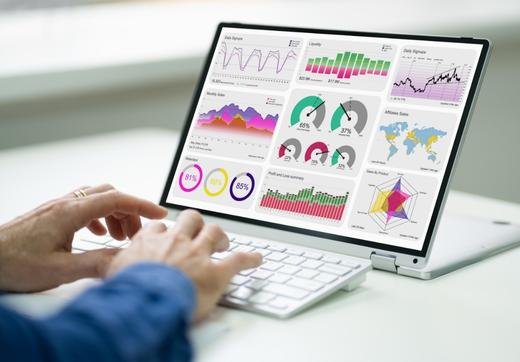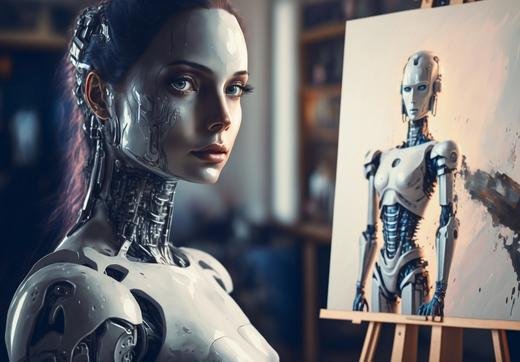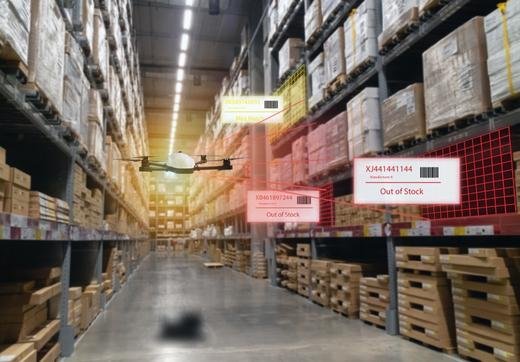Artificial Intelligence (AI) has revolutionized the world of technology and is rapidly advancing towards newer heights. Technology has made tremendous strides, from machine learning to natural language processing, and the AI landscape is expanding beyond business and enterprise into our personal lives. With the ever-growing popularity of AI, what can we expect in the year 2023 and beyond? In this article, we will explore what is the future of Artificial intelligence, the latest AI trends, predictions, and their potential implications for businesses and individuals.
What is the Future of Artificial Intelligence: AI Trends in 2023
 1. AI Chatbots Will Be More Commonplace
1. AI Chatbots Will Be More Commonplace
Chatbots have become increasingly popular this year, and they are expected to become more prevalent in 2023 and beyond. With advancements in AI and natural language processing, chatbots will become more sophisticated and able to provide better customer support. Businesses will use chatbots to automate routine tasks, such as scheduling appointments or answering frequently asked questions, freeing staff to focus on more complex tasks.
Currently, we are quite familiar with the presence of various chatbots on the web. From the basic customer service bots to those that can converse like a human, there is a multitude of them. Were you aware that many bots you have been interacting with are based on AI technology?
One particular example is ChatGPT, which began as a simple online companion. Interestingly, ChatGPT is actually an AI-backed chatbot. It is driven by OpenAI’s GPT 3 language model. Moreover, OpenAI has recently developed a newer model, GPT-4, accessible to Plus subscribers.
ChatGPT is a bot that was developed to imitate human reactions and carry out a wide range of activities. People initially used it for lighthearted conversations, but it soon became clear that ChatGPT can do practically anything online.
ChatGPT is a powerful tool in 2023, capable of blogging, coding, and answering various questions.
2. Microsoft’s Bing
Google has always been the top choice for searching online, but Microsoft has recently spruced up Bing with the help of artificial intelligence. This new Chat mode has given the search engine the capability to provide more thoughtful answers through its AI. However, Bing also has some advantages from the new Chat mode.
An example of artificial intelligence can be seen in MS Bing’s technology.
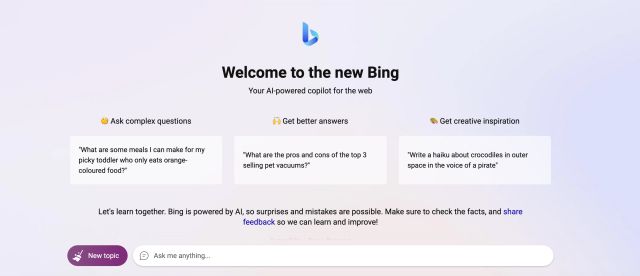
Chat mode from Bing AI allows anyone to converse with the search engine, leading to various search results. Similar to ChatGPT, the AI from Bing can answer an extensive range of inquiries and carry out many tasks. After its release, the website became immensely popular, with over 100 million daily active users. If you are already among those relying on MS Bing AI, you may have already tried out this incredible example of artificial intelligence.
3. Increased Adoption of AI-Powered Analytics
As data becomes more critical for businesses to make informed decisions, AI-powered analytics will continue to grow. AI can analyze large amounts of data much faster than humans and can identify patterns that may not be visible to the human eye. AI-powered analytics will be used to improve customer experiences, optimize operations, and drive revenue growth.
Music and Media Streams
Streaming services for music and media are becoming increasingly popular. People are using these services to access their favorite songs and watch movies and TV shows. With the convenience and affordability of such streaming options, many are choosing to use them over traditional media sources.
From Spotify to YouTube, we rely on AI to make our music and media streaming decisions. A particularly good example of this is the Discover Weekly playlist. AI and ML are being utilized to tailor the playlist to our tastes by introducing new artists and songs. Netflix is another prominent example of how AI is impacting our lives on a day-to-day basis.
A depiction of Spotify Enhance can be seen in the accompanying image. The picture highlights the service of the music streaming platform.
The newest AI-based features, such as Enhance, add songs to user-created playlists with comparable vibes. How does it work? Artificial Intelligence. YouTube is part of the same network with its suggestions.
By studying user data and behavior, the streaming service can predict what will be watched. Therefore, when users are viewing a recommended video on YouTube, watching a suggested show on Netflix, or listening to a ready-made playlist on Spotify, or any other media or music streaming service, it is important to recognize that AI is playing a major role.
4. AI-Powered Virtual Assistants Will Become More Advanced
Virtual assistants such as Amazon’s Alexa and Google Assistant have become omnipresent in our lives and will continue to become more advanced in 2023. These assistants will not only be able to carry out more complex tasks, but they will also be more proactive in suggesting actions based on our preferences and habits. This will further blur the line between human and machine interaction.
Google Duplex and Keeping the Line Open
Google has recently released a new feature, “Duplex” which can make phone calls on behalf of its users. Additionally, the tech giant has unveiled “Hold For Me,” which allows users to have Duplex wait in line while they are busy with other tasks.
Google Duplex is a prime example of using artificial intelligence to its fullest extent. In 2018, Google showcased this technology, which enables users to book tables in restaurants, simulating a human voice and comprehending the context of conversations, and responding just as a real person would. Duplex can be used to reserve movie tickets at cinemas, get salon appointments, and much more.
Hold For Me is a new feature added to Pixel phones in the US. This is another demonstration of AI’s role in our everyday lives, making certain tasks much simpler. For example, if one calls a toll-free number and gets placed on hold, Google Assistant can take over, alerting the caller when a human is available to talk. This can be a great time-saver.
 5. Increased Use of AI in Healthcare
5. Increased Use of AI in Healthcare
The healthcare industry is expected to see increased use of AI in 2023. AI-powered tools can help physicians make more informed diagnoses and treatment decisions. AI can also analyze large amounts of patient data to identify trends and improve patient outcomes. Wearable technology and connected devices will also become more prevalent, allowing remote patient monitoring and real-time data analysis.
Accurate Cancer Diagnosis
PathAI offers some of the best Machine Learning and Artificial Intelligence tools in healthcare that allow Pathologists to make precise diagnoses. This technology can reduce mistakes when diagnosing cancer, as well as offer a variety of new approaches to individual medical care. With greater accuracy in determining cancer in patients, many of them can be taken care of before it becomes fatal, saving many lives.
There are many other use cases for AI in Healthcare, including Virtual Health assistants, the treatment of rare diseases, and the automation of Redundant Healthcare Tasks.
 6. AI-Powered Cybersecurity Will Become More Critical
6. AI-Powered Cybersecurity Will Become More Critical
As cyber threats become more sophisticated, the use of AI-powered cybersecurity will become increasingly important. AI can analyze vast amounts of data and identify patterns indicating a potential attack, allowing organizations to defend against threats proactively. AI can also detect and respond to security incidents in real-time, reducing the time it takes to mitigate the impact of an attack.
Malware that is Exploited on the Same Day of its Discovery
Using AI and ML-powered systems, malware can be identified by its signature and the features it displays. For instance, if the software is designed to encrypt multiple files rapidly, that is a red flag. Likewise, any attempt to hide itself from observation would be a telltale sign of malicious code.
An AI-based tool that considers various characteristics can determine the risk of a not-a-yet-seen piece of software.
A considerable upgrade in endpoint security can be achieved.
Predictions for AI in 2023
 1. AI Will Enhance Creativity
1. AI Will Enhance Creativity
While some fear that AI will replace human creativity, others believe that AI will enhance it. In 2023, we can expect to see more AI-powered tools that help artists and designers create new and innovative works. AI can help automate routine tasks, allowing artists to focus on the creative aspects of their work. AI can also suggest new and unique ideas based on data analysis, leading to new and exciting creations.
AI Images Generators
It is evident that AI has massively impacted the field of visual media. OCR scanning can convert physically written words to text, while AI integration in portrait mode provides users with high-quality images. Many people may know that AI can produce entirely new images . AI has made it much simpler for users to generate pictures, with users only needing to provide prompts for AI image generators. A mixture of AI technologies powers these generators and can produce a variety of images.
It’s worth noting that, with only a prompt, the capabilities of these generators are limited only by our imagination. AI image generators like Midjourney and Dall-e are impressive in producing vibrant and stunning images.
If this trend continues, AI could ultimately rival the creative industry. Until then, plenty of these generators are available for you to explore.
However, there are still rising concerns if AI Generators stealing art.
2. AI Will Revolutionize Education
AI will revolutionize education in 2023 and beyond. AI-powered tools can help personalize learning, allowing students to learn at their own pace and in their own way. AI can also help identify areas where students are struggling, providing targeted interference to help them succeed. In addition, AI can help reduce teachers’ workload, allowing them to focus on teaching rather than administrative tasks.
Khan Academy created Khanmigo, an AI-powered guide.
Khan Academy has developed an AI-driven mentor called Khanmigo that provides teaching for students and support for teachers. The AI-based system offers all learners the advantages of private tutoring and provides interactive experiences and instant feedback to refine students’ computer science skills.
3. AI Will Transform Transportation
In 2023, we expect to see more AI-powered vehicles on our roads. Self-driving cars, trucks, and drones will become more prevalent, revolutionizing transportation. These vehicles will be powered by AI algorithms that can analyze real-time data to make decisions, such as adjusting speed or avoiding obstacles. This will reduce the likelihood of accidents and improve transportation efficiency.
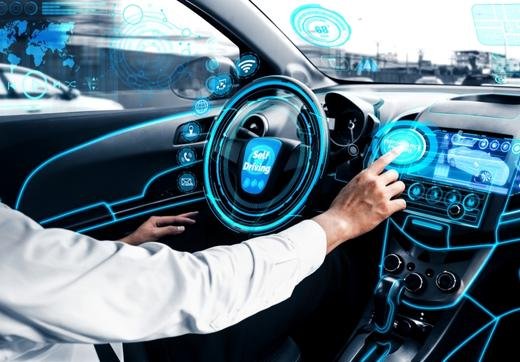 Fall Detection and Car Crash Accidents
Fall Detection and Car Crash Accidents
Different technologies have been developed to detect falling and automobile accidents to reduce the number of injuries and fatalities associated with these incidents. Some of these include wearable systems that use sensors to detect a fall and vehicle-based systems that can detect car accidents. Utilizing these technologies reduces the danger of falling and car crashes, and lives can be saved.
The most recent Apple Watches have a Fall Detection capability that sends an emergency alert if it detects a severe impact. This is thanks to the accelerometer and gyroscope working with AI algorithms, a technology saving countless lives.
This technology helps identify potential crashes ahead of time, allowing for preventative action.
AI is now used to power software utilities and life-saving features in our daily lives, such as the Car Crash Detection feature found in Google and Apple iPhones. This technology is based on Machine Learning models that have been trained on real-life car crashes, and in the event of a crash, it will send the location to your contacts and alert the response team.
 4. AI Will Transform Agriculture
4. AI Will Transform Agriculture
The agriculture industry is ripe for disruption, and AI will significantly impact in 2023. AI-powered sensors can collect data on soil, weather, and crop growth, allowing farmers to make more informed decisions about planting and harvesting. AI can also help farmers optimize irrigation and fertilizer usage, leading to higher yields and less waste.
Enhanced Agricultural Production
It is essential to identify signs of pests and diseases in a timely manner to ensure higher productivity and better quality of fruits. If left unchecked, any pest or disease can cause harm to crops, resulting in reduced productivity and higher expenses that could have a negative impact on an entire agricultural campaign.
Farmers must be equipped with the latest technologies, such as satellites, drones, and monitoring software, to quickly identify and respond to pests and diseases that threaten crop yields. A sudden outbreak of a plague can easily deplete a farming budget. Therefore, it is essential to be prepared with the help of technology.
By utilizing these technologies, producers can swiftly get to trouble spots and make concentrated treatments to stop the problem from increasing in their production environment, thereby achieving peak IPM control.
AI will also ensure better compliance with food safety factors and higher productivity of field evaluators.
5. AI Will Revolutionize Retail
In 2023, you see AI-powered retail experiences that provide personalized recommendations and an immersive shopping experience. AI can analyze data on a customer’s purchase history, browsing behavior, and social media activity to suggest products that interest them. AI power augmented reality experiences that allow customers to try on clothes virtually before purchasing.
Maximizing Efficiency in Supply Chains
Retailers realize keeping an adequately stocked inventory is fundamental. AI technology can assist by examining consumers’ past purchase habits and warning when popular items may run out. Additionally, AI can give knowledge about temporal consumer demand, such as determining seasonal product demand and predicting when these items will be most sought after.
AI can benefit retail in many other forms like automation, sustainability, cost reductions, and customer satisfaction.
Implications of AI in 2023
As AI becomes more prevalent in our lives, there are several potential implications to consider.
1. Job Displacement
While AI has the potential to create new jobs, it may also lead to the displacement of existing jobs. Routine tasks that can be automated with AI are at the highest risk of being eliminated, and workers in these fields may need to develop new skills to remain relevant.
2. Ethical Considerations
As AI becomes more advanced, there are ethical considerations to evaluate. For example, how do we ensure that AI algorithms are unbiased and do not maintain existing inequalities? How do we guaranteethat AI is used for the benefit of humanity and not for nefarious purposes?
3. Security Risks
As AI becomes more prevalent, its security risks will also increase. Cybercriminals may use AI to carry out attacks, and using AI in cybersecurity may also lead to new vulnerabilities.
4. Privacy Concerns
As AI collects more data about individuals, privacy concerns must be considered. How do we ensure that individuals have control over their data and that it is not misused?
Receiving Suggestions from Social Media Posts, Amazon, and Netflix
The use of social media feeds, Amazon, and Netflix can provide users with tailored recommendations. These sources can be utilized to get personalized tips.
AI also has a significant role to play in social media. The fact is, if you are using social media, a large portion of your choices will be influenced by AI.
AI is responsible for curating all the content you view on social media, from your timeline to the notifications you receive. This is done using intricate algorithms that take into account all your past online activity, searches, interactions, video views, and more, to create a personalized experience. The primary goal of AI is to make the apps so appealing that you continually return to them. Clearly, AI has been successful in this regard.
When you add a product to the cart on Amazon, the recommendations you see are created with the help of AI. Similarly, Netflix uses AI to give you personalized suggestions regarding movies and shows that you may like.
5. Technological Dependence
As we become more reliant on AI, there is a risk of technological dependence. If AI systems fail or are compromised, it could have significant consequences for businesses and individuals.
Conclusion
In conclusion, the future of AI in 2023 is exciting and full of potential. We can expect AI to become more prevalent in our personal and professional lives, transforming industries and revolutionizing how we live and work. However, there are also potential implications to consider, such as job displacement, ethical considerations, security risks, privacy concerns, and technological dependence. As we continue to develop and use AI, it is essential that we do so responsibly and with the best interests of humanity in mind.
What are the top AI trends to watch for in 2023?
The top AI trends to watch out for in 2023 include the democratization of AI, explainable AI, the growth of generative AI models, and the rise of no-code AI tools.
What are the top 10 AI trends in the coming year?
The top 10 AI trends to look out for in the coming year are ethical AI, generative AI models, edge AI, AI bias and fairness, conversational AI, sustainable AI, AI assistants, AI in the enterprise, the democratization of AI, and powerful AI use cases.
How can AI models help companies in various industries?
AI models can help companies in various industries automate tasks, improve decision-making processes, and provide personalized experiences for customers, thus improving customer satisfaction and driving business growth.
What is generative AI, and how is it being used?
Generative AI is a type of AI that involves the creation of new data, such as images, music, or text. It is being used in fields such as art, music, and gaming and is also being explored for use in healthcare and drug discovery.
What is explainable AI, and why is it important?
Explainable AI is a type of AI that provides insights into how the AI arrived at a particular decision, making it easier to understand and trust. It is important because it can help address concerns around AI bias and improve transparency and accountability in AI decision-making processes.
What is edge AI and how is it different from traditional AI?
Edge AI involves running AI algorithms on edge devices, such as smartphones or IoT devices, rather than on centralized servers. This allows for faster processing times and greater privacy, as data can be processed locally rather than being sent to the cloud.
What are the challenges of AI bias and fairness?
AI bias and fairness challenges include ensuring that AI models are trained on diverse data sets, addressing human biases in the data, and developing methods to identify and mitigate bias in AI decisions.
What are some powerful AI use cases?
Some powerful AI use cases include fraud detection, predictive maintenance, personalized medicine, and predictive analytics for business decision-making.
What is the future of AI, and how will it evolve?
AI’s future will likely involve greater democratization of AI tools and technologies, increased emphasis on explainable and ethical AI, and greater integration of AI into various industries and sectors, including healthcare, finance, and manufacturing.
How can businesses integrate AI into their operations?
Businesses can integrate AI into their operations by identifying specific use cases where AI can provide value, selecting appropriate AI tools and models, and addressing data privacy and security concerns.

